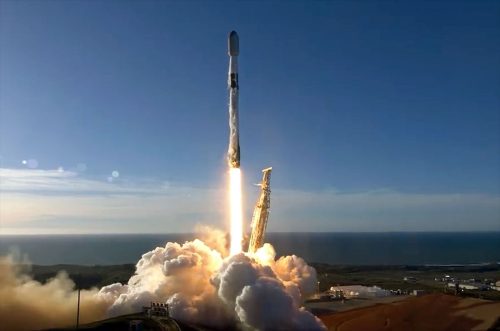
SpaceX, officially known as Space Exploration Technologies Corp., has been at the forefront of revolutionizing space travel and exploration since its inception in 2002 by Elon Musk. With a mission to reduce space transportation costs and enable the colonization of Mars, SpaceX has introduced a series of innovative technologies and milestones that have significantly impacted the aerospace industry. This article delves into the history, key achievements, and the latest exciting developments surrounding SpaceX.
History and Vision
Founded with the ambitious goal of making life multiplanetary, SpaceX has grown from a startup with a single rocket design to a global leader in commercial spaceflight. The company’s vision is to develop fully reusable launch vehicles, spacecraft, and a global satellite internet system, ultimately facilitating human life on Mars.
Key Achievements
SpaceX’s journey is marked by numerous industry-first achievements. The Falcon 1, its first orbital rocket, became the first privately developed liquid-fueled rocket to reach orbit in 2008. The Falcon 9, introduced in 2010, has since become known for its reliability and reusability, significantly reducing the cost of access to space. The Dragon spacecraft, which first flew to the International Space Station (ISS) in 2012, was the first commercial spacecraft to deliver cargo to the ISS and safely return cargo to Earth.
A major milestone was achieved with the development of the Falcon Heavy, the most powerful operational rocket in the world by a factor of two. Its maiden flight in 2018 demonstrated SpaceX’s capability to launch heavy payloads into space, a critical step towards deep space missions.
The introduction of the Starlink satellite constellation aims to provide global internet coverage, with the dual goals of funding Mars colonization efforts and bridging the global digital divide.
Innovations and Current Projects
SpaceX’s Starship, the next-generation spacecraft designed for missions to the Moon, Mars, and beyond, represents the culmination of SpaceX’s vision for reusable space vehicles. Recent tests have seen significant progress towards its development, with successful high-altitude flight tests demonstrating key capabilities such as in-flight engine relighting and controlled aerodynamic descent.
Exciting Developments Today
As of 2024, SpaceX continues to push the boundaries of space exploration:
- Starship’s Second Flight Test Success: On November 18, 2023, Starship’s second flight test marked a series of important milestones, including the first successful hot-stage separation for a vehicle of its size and a full-duration burn of the Super Heavy Booster’s 33 Raptor engines. Despite a rapid unscheduled disassembly (RUD) of the booster, the test provided valuable data for future improvements.
- Collaboration with Vast for Commercial Space Station: SpaceX has been selected to launch Vast’s commercial space station, Vast Haven-1, and its first human spaceflight mission, showcasing SpaceX’s growing role in commercial space endeavors.
- dearMoon Project: In a partnership with Japanese entrepreneur Yusaku Maezawa, SpaceX will undertake the dearMoon project, sending a crew of artists and creators on a journey around the Moon aboard Starship, aiming to inspire humanity through space-based art and creativity.
- NASA’s Artemis Program: SpaceX’s Starship has been selected by NASA to support sustained lunar exploration, demonstrating the vehicle’s potential as a versatile lunar lander for crew and cargo missions to the Moon.
Conclusion
SpaceX’s relentless pursuit of innovation and its series of groundbreaking achievements have not only reshaped the aerospace industry but have also brought humanity closer to becoming a multiplanetary species. With each successful mission, SpaceX moves one step closer to realizing its visionary goals, making today an exciting time in the history of space exploration. As SpaceX continues to develop its technologies and embark on ambitious projects, the world watches with anticipation for what the future holds in this new era of space travel.
Article above assisted by ChatGPT, below article assisted by Microsoft CoPilot.
SpaceX: Revolutionizing Space Exploration
Introduction
Space Exploration Technologies Corp., commonly referred to as SpaceX, is an American spacecraft manufacturer, launch service provider, defense contractor, and satellite communications company headquartered in Hawthorne, California. Founded by Elon Musk in 2002, SpaceX has been at the forefront of the aerospace industry, ushering in the era of commercial spaceflight.
History
After being ousted as the CEO of PayPal in late 2000, Elon Musk started to gain an interest in space exploration ventures. This spark of interest led to the founding of SpaceX in 2002 with the goal of reducing space transportation costs and ultimately developing a sustainable colony on Mars. SpaceX was the first private company to successfully launch and return a spacecraft from Earth orbit and the first to launch a crewed spacecraft and dock it with the International Space Station (ISS).
Details
SpaceX currently operates the Falcon 9 and Falcon Heavy rockets along with the Dragon and Starship spacecraft. The company offers internet service via its Starlink satellites, which became the largest-ever satellite constellation in January 2020 and as of November 2023 comprised more than 5,000 small satellites in orbit. Meanwhile, the company is developing Starship, a human-rated, fully-reusable, super heavy-lift launch system for interplanetary and orbital spaceflight.
Highlights
SpaceX has gained worldwide attention for a series of historic milestones. It is the only private company capable of returning a spacecraft from low-Earth orbit. In 2012, SpaceX’s Dragon spacecraft became the first commercial spacecraft to deliver cargo to and from the International Space Station. And in 2020, SpaceX became the first private company to take humans there as well.
Recent News
SpaceX’s massive Starship vehicle lifted off on March 14, 2024, from the company’s manufacturing and test launch facilities near Boca Chica Beach. The ascent was smooth, with the upper Starship stage reaching orbital velocities. About 45 minutes after launch, it started re-entering the atmosphere, heading toward a belly-flop splashdown in the Indian Ocean. Live video showed red-hot gases heating the underside of the vehicle. Then, 49 minutes after launch, communications with Starship ended, and SpaceX later said the vehicle had not survived the re-entry, presumably disintegrating and falling into the ocean. Even so, the data collected during the test would help engineers improve performance during the next test flight.
Conclusion
SpaceX continues to revolutionize the aerospace industry with its innovative technologies and ambitious goals. From its historic milestones to its recent Starship test flights, SpaceX is not just reaching for the stars but is making it possible for us to reach them too.








